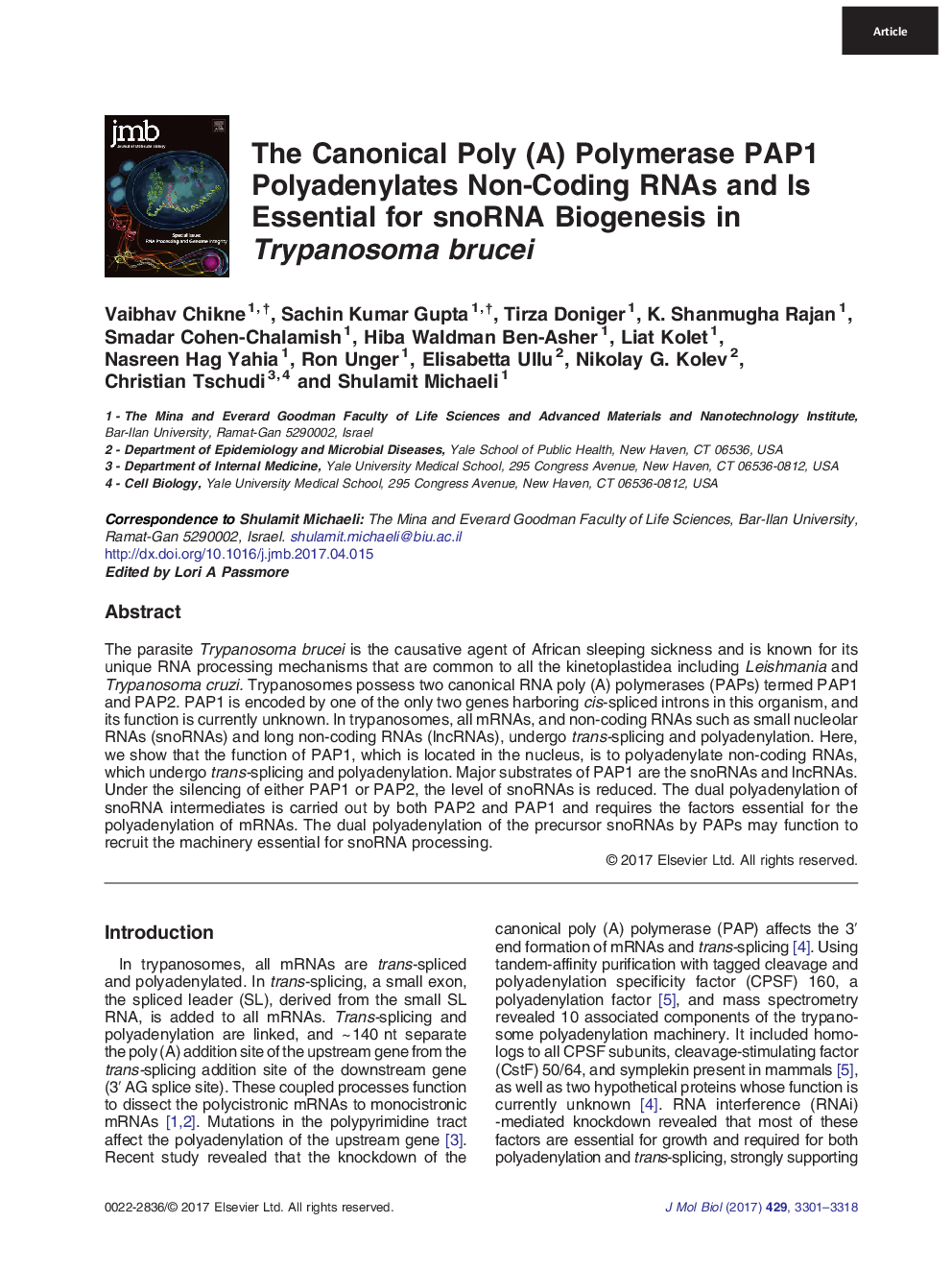| Article ID | Journal | Published Year | Pages | File Type |
|---|---|---|---|---|
| 5533109 | Journal of Molecular Biology | 2017 | 18 Pages |
â¢PAP1 is encoded by one of the two genes in trypanosomes containing cis-intron.â¢snoRNA precursors and lncRNAs are polyadenylated by two PAPs, PAP1 and PAP2.â¢snoRNA polyadenylation requires the canonical polyadenylation machinery.â¢snoRNA processing requires PAP1 or polyadenylation by PAP1.
The parasite Trypanosoma brucei is the causative agent of African sleeping sickness and is known for its unique RNA processing mechanisms that are common to all the kinetoplastidea including Leishmania and Trypanosoma cruzi. Trypanosomes possess two canonical RNA poly (A) polymerases (PAPs) termed PAP1 and PAP2. PAP1 is encoded by one of the only two genes harboring cis-spliced introns in this organism, and its function is currently unknown. In trypanosomes, all mRNAs, and non-coding RNAs such as small nucleolar RNAs (snoRNAs) and long non-coding RNAs (lncRNAs), undergo trans-splicing and polyadenylation. Here, we show that the function of PAP1, which is located in the nucleus, is to polyadenylate non-coding RNAs, which undergo trans-splicing and polyadenylation. Major substrates of PAP1 are the snoRNAs and lncRNAs. Under the silencing of either PAP1 or PAP2, the level of snoRNAs is reduced. The dual polyadenylation of snoRNA intermediates is carried out by both PAP2 and PAP1 and requires the factors essential for the polyadenylation of mRNAs. The dual polyadenylation of the precursor snoRNAs by PAPs may function to recruit the machinery essential for snoRNA processing.
Graphical AbstractDownload high-res image (188KB)Download full-size image
